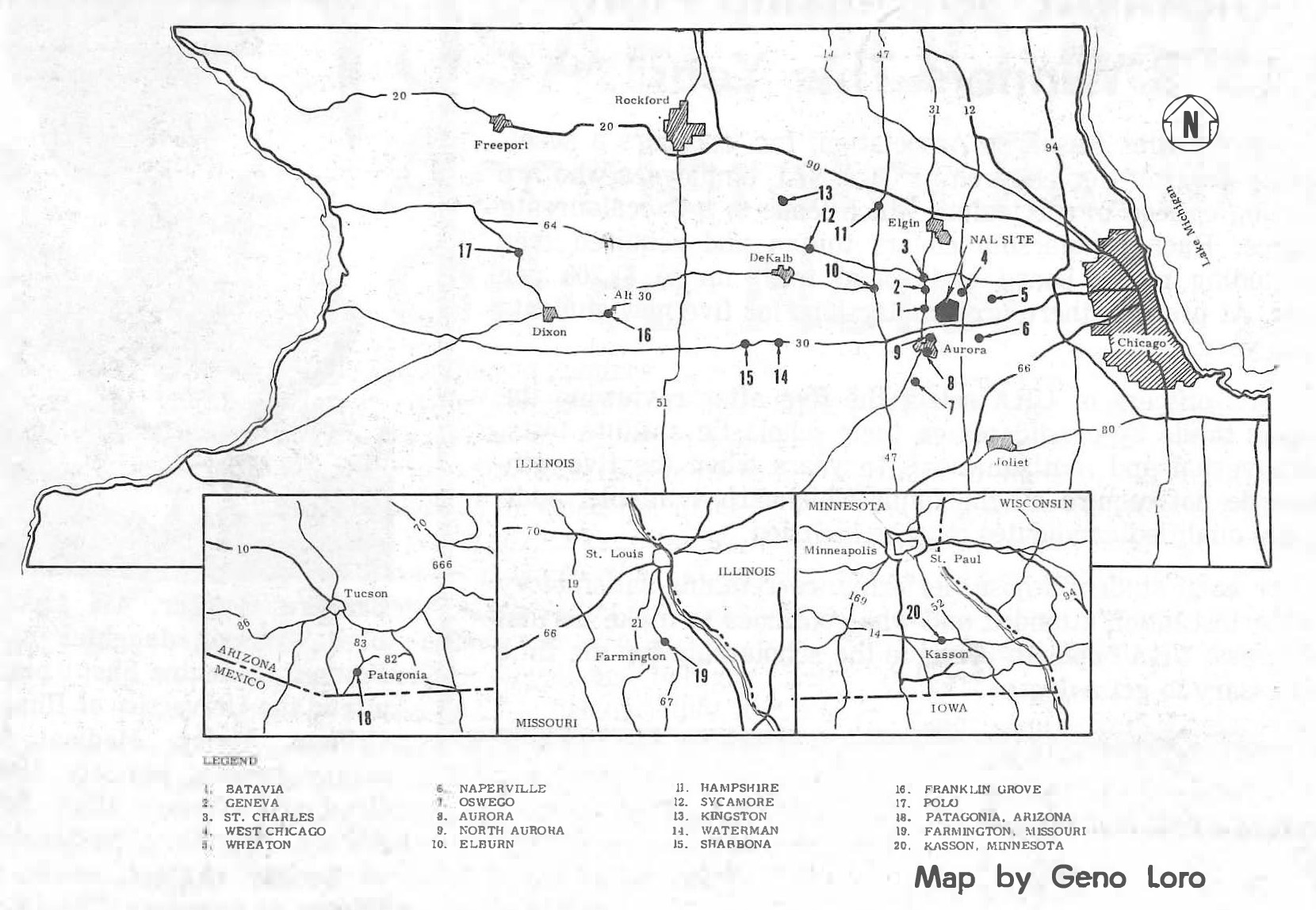Where Have all the Farmers Gone?

Location of families who have moved from the NAL Site.
Where have all of the farm families who lived on the NAL 6,800-acre site moved in recent months?
The land, some of the most productive in northern Illinois, was turned over to the U. S. Atomic Energy Commission for development of the National Accelerator Laboratory earlier this year by the State of Illinois.
Relocation Studied
A survey was made this summer of the relocation of the farm families who once occupied the acreage along familiar DuPage and Kane county highways - such as Batavia, Feldott, Giese, Eola, Kautz roads.
Some of the families had been residents of the site area for scores of years. Others were relative newcomers. To honor the former residents of the site and also to provide a historical context, NAL is establishing a museum on the site. It will be located on the former Leon Feldott farm on Batavia Road.
Most Stay Nearby
Of the 56 farm families moving off the NAL site, 39 have relocated within a 40-mile radius of the site. Since many had been long-time residents on the site, the decision of so many to remain in the same general area is not surprising.
The remaining 17 families are accounted for as follows: 11 are still living on the site farms, nine on a lease-back arrangement (they will of course have to move eventually); three families moved to the Dixon-Oregon area of western Illinois; one moved to Minnesota, one to Missouri, and another to a ranch in Arizona, close to the Mexican border.
Some Retired
Only about one-quarter of the 56 families relocated on working farms, since many of the men were of retirement age and took advantage of this opportunity to withdraw from farming. Two families who already owned second farms had only to move to the other location.
Unit Size Increases
Many of those who purchased farms obtained even larger units than they had owned on the site, at least four of the new farms comprising between 250 and 350 acres. These farmers typically say, "Farming is all I know; it's what I love, and I wouldn't want to do anything else."
The rest of the families either succumbed to the lure of suburbia, or stayed in the country but on smaller plots including just the house and perhaps a garden as the last vestige of farm life. While a half-dozen kept their former homes and moved them onto lots in Batavia and West Chicago, others purchased new homes and are enjoying more up-to-date and elegant surroundings than ever were theirs on the farms.
It has been reported that during the past 18 or 20 months there were seven deaths among the farm families of the site. Almost all were over 60 years of age, and all were males.
Now that the critical period has passed - the months, the years of uncertainty since the site was announced in 1965, the searching for a new location (one family looked at over 100 farms, and many looked at at least 40!). and the moving of all their belongings - most seem to be enjoying their new life.
But they say, almost without exception, "I still miss the old farm." Even pleasant new surroundings and a generally smooth adjustment to the change will not replace the loss of the old community and the break-up of the long-established neighborhood groups that existed on the 6,800 acres.


